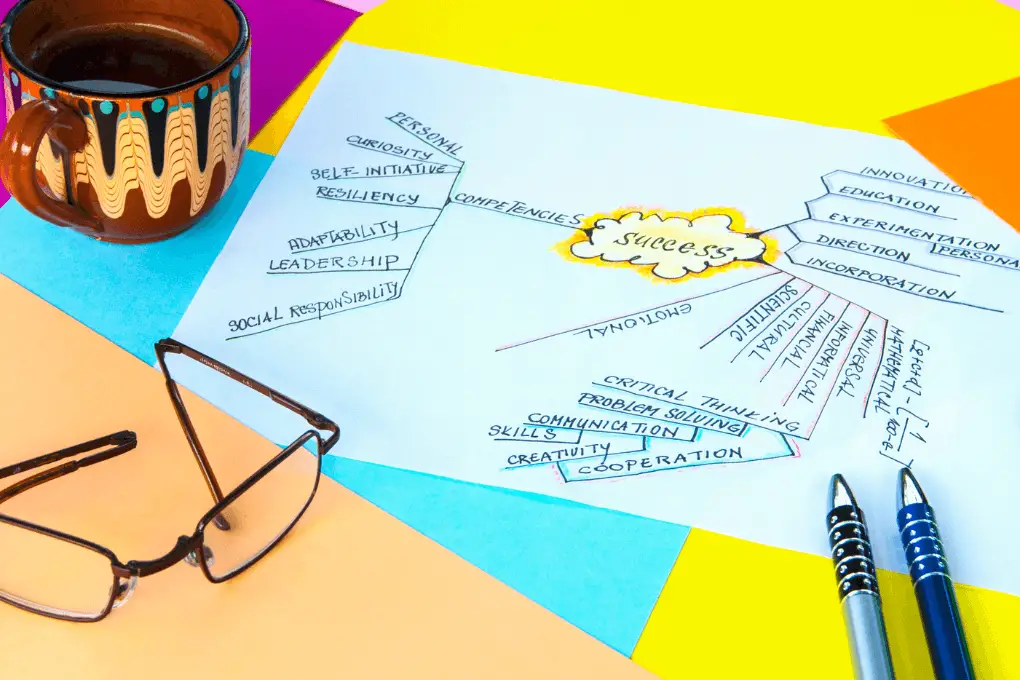Let me ask you one thing: do you feel like you’re constantly swimming against the tide of your task list and just can’t seem to boost your productivity?
Do you often struggle to stay on top of your task list and feel overwhelmed by the amount of work you must do? If so, it’s time to take a step back and look at how you can better manage your time.
One of the biggest challenges we all face is managing our time effectively. But don’t worry; I’ve got some proven and popular time management techniques to help you make the most of your time and increase productivity.
So, let’s get started!
Table of Contents
Prioritizing Tasks

Now, let’s talk about one of the most important aspects of time management – prioritizing tasks.
When you’ve got a mile-long list of tasks, it can be overwhelming. That’s where prioritizing comes in.
By identifying which tasks are the most important and tackling them first, you can make sure you’re making progress on the things that truly matter.
One popular method for prioritizing tasks is the Eisenhower Matrix, which helps you sort your tasks into four categories:
- urgent and important tasks (Quadrant 1)
- important but not urgent tasks (Quadrant 2)
- urgent but not important tasks (Quadrant 3), and
- tasks that are neither urgent nor important (Quadrant 4)
Another excellent method is the ABCDE method, which assigns a priority level (A, B, C, D, or E) to each task, with A being the most important and E being the least important.
Now, let’s talk about how to prioritize daily tasks effectively. Here are some things you can do to start prioritizing:
- Review your list of tasks and categorize tasks using the Eisenhower Matrix or ABCDE method.
- Start with the most important and work your way down the task list.
- Break large tasks down into smaller, more manageable chunks.
- Set realistic deadlines for yourself and stick to them.
- Review your progress at the end of each day and adjust your priorities as needed.
- Learn to say no to non-essential tasks and delegate tasks to others when possible.
You can make the most of your time and increase productivity by prioritizing tasks and focusing on the most important ones. Remember, it’s essential to review your progress, adjust your priorities as needed, and don’t hesitate to seek help from others.
So go on, get prioritizing and watch your productivity soar!
Recommended Reading
Setting Goals

We all want to achieve something, but it’s easy to get lost in the day-to-day grind. Setting clear, measurable goals is critical to staying focused and making progress.
One popular framework for setting practical goals is SMART, which stands for Specific, Measurable, Achievable, Realistic, and Time-bound. This framework allows you to create clear, specific, and achievable goals.
To set and achieve long-term goals, you might want to consider the following tips:
- Use the SMART goal-setting framework to create clear and specific goals.
- Break down larger goals into smaller, more manageable tasks.
- Prioritize and focus on the most important goals.
- Set realistic deadlines and track your progress.
- Stay flexible and adjust your goals as needed.
- Celebrate your successes and learn from setbacks.
- Stay motivated by reminding yourself of why you started in the first place.
Setting clear, measurable goals and breaking them down into manageable tasks can increase your chances of achieving your objectives and boosting your productivity.
If you want to learn more about goals and how to set them correctly, check out this blog post about Why Goals are Important.
Eliminating Distractions

Let’s talk about one of the biggest time wasters – distractions. Whether it’s social media, email, or just the constant stream of notifications on your phone, distractions can make it hard to stay on task and get things done.
One popular technique for minimizing distractions is the Pomodoro Technique. This technique involves breaking your day into short, focused 25-minute intervals (sometimes more), known as “Pomodoros,” with limited time breaks in between. You can reduce distractions and make the most of your time by working in focused intervals. The best part is that the Pomodoro Technique works with any task, whether writing a report, studying for an exam, or tackling your to-do list.
The key to making the Pomodoro Technique work for you is finding your “Ideal Pomodoro.” It refers to the time that works best for you to stay focused and productive. Some people may find that the “standard work window” of 25 minutes is too short, while others may find it too long. Experiment with different lengths of time and see what works best for you.
One of the great things about the Pomodoro Technique is that you don’t need fancy tools or equipment to start. A simple kitchen timer or countdown timer will do the trick. You can even use a timer app on your phone or computer.
The Pomodoro Technique is a simple yet effective way to minimize distractions and make the most of your valuable time. By breaking your work into focused intervals and taking short breaks in between, you can increase your productivity and get more done in less time. So, why not give it a try and see how it works for you?
Another effective strategy is to use apps that block distracting websites and apps during specific times of the day. For example, apps like Freedom and Cold Turkey allow you to block access to particular websites and apps, so you can stay focused and avoid distractions.
Here are a few tips to minimize distractions:
- Use the Pomodoro Technique to work in focused, 25-minute intervals.
- Turn off notifications on your phone or computer.
- Use apps that block distracting websites and apps during specific times of the day.
- Create a designated workspace free from distractions.
- Learn to recognize and avoid sources of distractions.
By minimizing distractions and focusing on your work, you can increase your productivity and make the most of your time. Remember that it is essential to identify and address the sources of distractions that affect you, and don’t hesitate to seek help from tools or apps that can help you minimize them.
Time Tracking

By keeping an eye on how you spend your time, you can gain insight into where your chunks of time are spent, identify areas for improvement, and make more informed decisions about how to use your time.
Some methods for tracking time include tracking productive hours, which involves manually writing down how you spend your time and using a time tracker. A time tracker could be an app or a website that can automatically track your time on different tasks and give you a detailed breakdown of where your time is being spent.
The benefits of effective time tracking include the following:
- Gaining insight into where your time is spent.
- Identifying areas for improvement.
- Making more informed decisions about how to use your time.
- Spotting time-wasters and distractions that affect productivity.
- Setting realistic deadlines and tracking progress.
- Improving time management skills.
Some of the most popular time-tracking apps are the following:
By tracking your time, you can make more informed decisions about how to use your time and take control of your daily schedule. It’s essential to choose the tracking method that works best for you, whether it’s a manual time log or a time tracking app.
Remember to review and analyze your time logs regularly so you can make the necessary changes moving forward.
Delegation

When you delegate tasks, you’re passing them off to someone else to complete, freeing up your time to focus on other essential things. Proper task delegation allows for a win-win situation that can help you be more efficient and effective with your time.
Proper task delegation is not something to take lightly, though. It’s still important to identify the right person for the job, give them the necessary information and tools and provide support. In other words, you must ensure that the person you’re delegating the task to has all the resources they need and can get the job done.
Here are some strategies for using proper task delegation as one of your time management techniques:
- Use project management software. Project management software can help you assign tasks, track progress, and communicate with team members.
- Create SOPs for complex and repetitive tasks. Standard Operating Procedures (SOPs) can help you delegate tasks more effectively by providing clear instructions and guidelines for completing the task.
- Communicate clearly. Communicate your expectations and goals to the person you are delegating the task to, and provide them with all the information they need to complete the job.
- Provide support. Provide the person with the necessary tools, resources, and support to complete the job.
- Follow up. Follow up with the person you have delegated the task to and provide feedback on their progress.
Effective delegation can help you focus on important and urgent tasks, increase productivity, and make better use of your time. By using project management software, creating SOPs, communicating clearly, providing support, and following up, you can delegate tasks more effectively and achieve greater success in your work.
Time Blocking

Time blocking is about dividing your day into blocks of time and dedicating each time block to a specific task or activity. Doing so allows you to focus on one task at a time instead of constantly switching between tasks (which we all know can be a major productivity killer).
The basic idea of dividing your day into blocks of time is to allow you to plan your day in advance and assign time constraints to specific tasks or activities. For example, you might want to dedicate the first hour of your day to checking and responding to emails, the next hour to working on a project, and the next hour to scheduling and planning your day. By breaking down your day into smaller, manageable time blocks, you can focus on one task at a time and avoid distractions.
The benefits of this simple time management technique include:
- Increased focus and productivity
- Improved time management systems
- Reduced stress and anxiety
- Greater ability to accomplish more in less time
- Better ability to prioritize tasks
- Reduced distractions
- Allows you to focus on a single task
Time blocking can be a powerful tool for scheduling your time more effectively and increasing productivity, but don’t forget to be flexible with it. Remember, there’s no perfect schedule, so don’t be afraid to adjust your schedule as needed.
Recommended Reading
Time Buffers

Time buffers are about setting aside extra time to account for unexpected events or delays. Think of it as a cushion of time you can use to catch up or to make adjustments if things don’t go as planned.
The importance of creating time buffers is based on the fact that most of us underestimate the time it takes to complete a task, especially when it comes to unexpected events. Time buffers are a great way to account for this by providing a cushion of time that you can use to catch up or make adjustments if things don’t go as planned. This can help you to stay on track and avoid last-minute stress, which can also be a major productivity killer.
Here are some practical examples of how time buffers should be done:
- Add extra time to your schedule when you’re doing advance planning. For example, if you have a meeting estimated to last for an hour, allot at least an hour and 15 minutes instead.
- Set aside extra time for commuting or traveling. For example, if you expect your commute to take 30 minutes, schedule an extra 15 minutes to account for unexpected delays.
- Add extra time to your schedule for tasks that you know are prone to delays or complications. For example, if you know that a particular task usually takes longer than expected, schedule an extra 15-30 minutes to account for that.
- Use a time buffer to make up for the lost time. If you are running behind schedule, use your time buffer to catch up and get back on track.
Creating time buffers is a simple but effective way to stay on track and avoid last-minute stress. Adding extra time to your schedule allows you to account for unexpected events and delays and still have the time you need to get things done. It’s a small but powerful step to increase your productivity and avoid stress.
Mind Mapping

Mind mapping is about visually representing your ideas and information in a hierarchical and interconnected structure. But it’s not just for brainstorming, — mind mapping can be a powerful tool for organizing and prioritizing tasks, too!
When mind mapping, you start with a central idea or concept and then branch out from that main idea, connecting related ideas and information. This can help you to see the big picture and understand how different tasks and concepts are related. Mind maps can also help you to identify patterns, make connections, and generate new ideas.
Mind mapping can be done in different ways, such as drawing mind maps on paper or using apps. If you’re more of a traditionalist and prefer to work with pen and paper, drawing mind maps can help you get your ideas down quickly and easily make changes as needed. But if you’re more tech-savvy, many mind-mapping apps like XMind, MindNode, and MindMeister can help you create, edit and share mind maps.
Mind mapping is a powerful tool for organizing and prioritizing tasks by representing ideas and information in a visual, hierarchical, and interconnected structure. It can help you see the big picture, identify patterns, connect, and generate new ideas. So go ahead and give mind mapping a try!
Flexibility

Being flexible means being open to change and being able to adjust your plans and approach as necessary. It’s like being a gymnast; you must bend and adapt to different situations. Otherwise, you’ll be left behind.
Incorporating flexibility in time management can help you:
- Become more responsive to changes in your environment and schedule.
- Handle unexpected events and delays efficiently.
- Prioritize and focus on the most critical tasks.
- Improve your ability to make adjustments and stay on track.
Here are some tips on successfully incorporating flexibility in your time management:
- Be open to change and be willing to adjust your plans as necessary.
- Prioritize your tasks and focus on the most important ones.
- Use other time management techniques, such as time buffers and mind maps, to help you adapt to changing circumstances.
- Stay organized and be prepared to make adjustments as necessary.
- Be mindful of your time, and be conscious of how you are spending it.
- Don’t be afraid to ask for help when you need it.
Flexibility is crucial to time management because it allows you to adapt to changing circumstances and stay on track. By being open to change and being willing to adjust your plans as necessary, you can improve your ability to make adjustments and stay on track.
So, be flexible and stay organized; it will help you to handle unexpected events and delays, and prioritize and focus on the most critical tasks like a boss.
Key Takeaways

Now, let’s wrap things up!
We’ve discussed various time management techniques that can help you boost your productivity and get more done in less time. From prioritizing tasks to setting goals, eliminating distractions to tracking time, and incorporating flexibility, delegation, time blocking, time buffers, and mind mapping, these strategies will help you become more efficient and effective in managing your time.
But remember, time management is not a one-size-fits-all solution, and different techniques may work better for different people. The key is finding the best techniques for you and continually evaluating and adjusting your approach as necessary.
I hope this post has provided you with valuable information and insights on improving your time management skills. I encourage you to implement the techniques discussed in this post and track your progress. Doing so lets you see how your productivity improves over time and make any necessary adjustments to your approach. Creating the perfect schedule that balances your daily life, and aligns with your daily life patterns, can help you to find the ideal balance between work and life.
Remember, time is a valuable resource, so use it wisely, and don’t waste it on things that don’t matter. Happy productive time managing, and thanks for dropping by!
Disclaimer: This post may contain affiliate links. Meaning, if you click on one of the product links, I will earn a small commission at no cost to you. Thank you for supporting Creativity Mesh.





